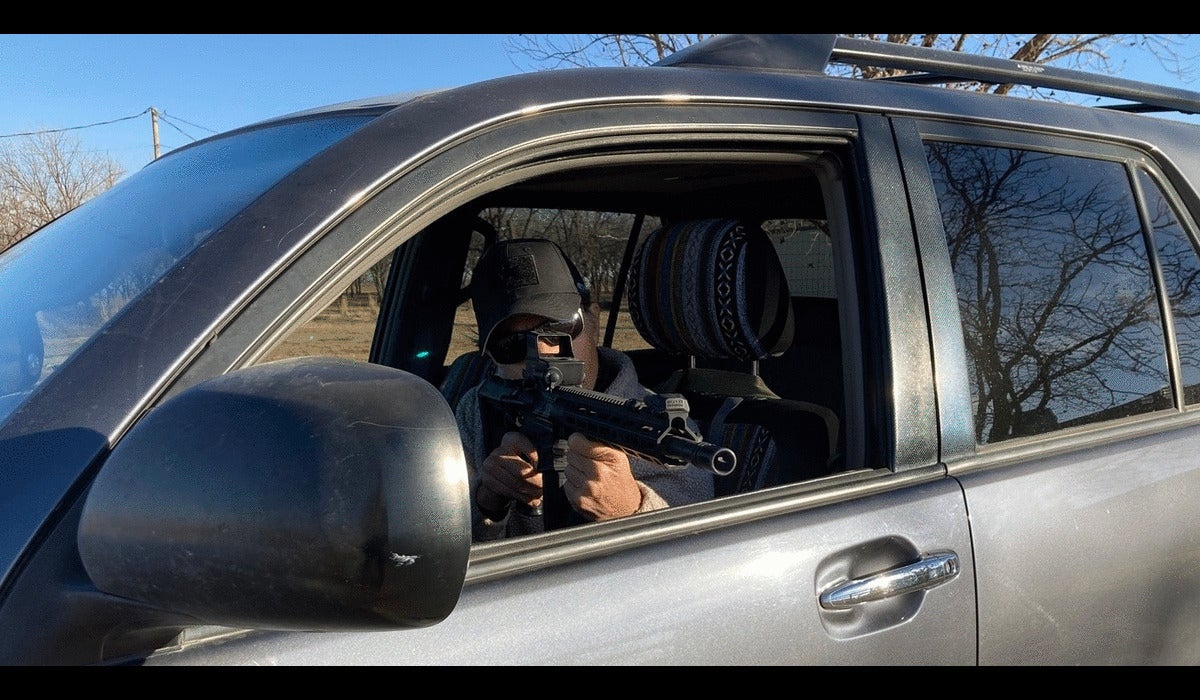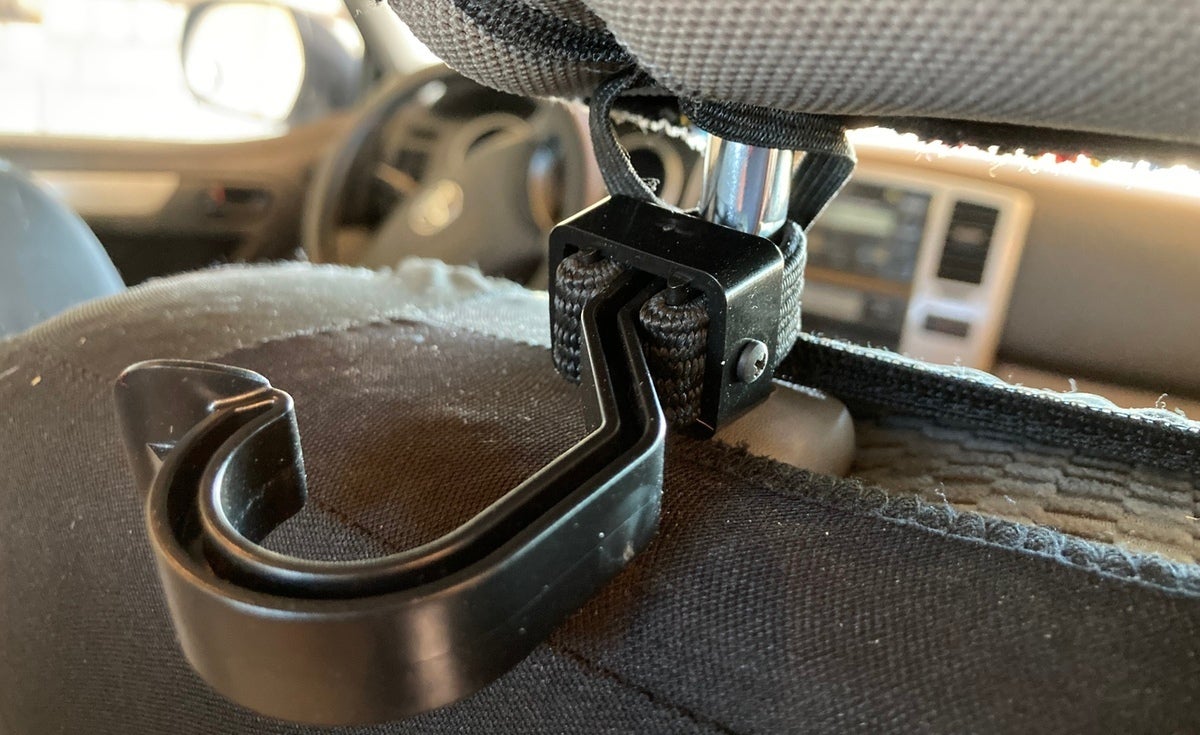Snap Rack: the Simple Way to Carry and Access a Carbine in Your Vehicle
Eve Flanigan 12.23.20

If you’re serious about self-protection with your carbine or if you’re a property owner who needs to dispatch coyotes you encounter on patrol, Lucid Optics has your back. Their Snap Rack is an utterly simple but ingenious device to keep a carbine readily accessible, yet discreet and out of the way of front seat occupants.
The heart of the Snap Rack is a sturdy plastic hook molded in the shape of a clothes hanger hook. But the open end is flat—which makes it ergonomic. At the straight/bottom end of the hook is a rigid loop. Through it, the buyer threads and eventually trims off a length of elastic, to form another loop, this one of stretchy fabric. A sturdy, square collar snaps (with some force; I used a hammer) around the loops to hold them in place—the “snap” in Snap Rack. Two tiny screws are provided to keep the elastic from sliding out of place, though they’re probably unnecessary as the collar is quite tight.
If your headreast posts can be released completely, simply drop a post through the prepared Snap Rack and it’s good to go. If they’re the type that can’t be removed, the wrapping of elastic and securing the square brace and screws must be done while working around the post. Fortunately, the product comes with clearly written instructions and pictorial illustrations.


With the hook now protruding towards the back of the seat, secured to the headrest, with the open end facing front, the front seat is now a holding device for a carbine in muzzle-up position. The hook fits around the barrel or muzzle device, depending on length and whether the butt of the stock is resting flat on the floor or upon an object on the floor. Reaching from the other front seat, the operator’s thumb easily snaps off the hook, releasing the barrel into his or her hand where it can be deployed without muzzling anyone inside the vehicle.
I’ve used the Snap Rack with two different carbines in two different vehicles. This tiny device delivers huge comfort in knowing I can get to the rifle quickly and safely, while even someone sticking their nose on the windows can’t tell what’s there. A jacket dangling just so completely conceals the gun and provides some dust protection. On the draw, the jacket is easily flipped away before releasing the Snap Rack. It’s a beautifully simple solution to carrying an accessible long gun in a car or crew cab truck.

Not all rifles are long enough with the stock collapsed to reach the snap rack. The obvious first solution is to extend the stock a bit, but that means the gun is less maneuverable inside the cab. I have a backpack that lives in the car anyway, and with one rifle I simply put the pack on the floor to raise up the gun enough to be held securely in the hook. This has the added advantage of greatly reduced road vibration on the optic.

The Snap Rack is inexpensive and easy to order from Lucid Optics of Wyoming. At $14.99, it’s very affordable. The product comes with enough elastic to replace some if you make a mistake cutting, or if the first loop wears out.
Of course, safety comes first. Never store or carry a loaded or easily loadable firearm in such a way that children or irresponsible adults can get their hands on it. Keep the vehicle locked at all feasible times. And never store a long gun with a loaded chamber, as a driving-related impact has the potential to induce an unintended discharge.